- Submissions

Full Text
Novel Research in Sciences
Investigating the Use of SMART Technologies to Support the Implementation of the European Tourism Indicator System for Small Island Destinations: An Irish Study
Colm Barcoe*
Ballsbridge College, Ireland
*Corresponding author:Colm Barcoe, Ballsbridge College, Ireland
Submission: February 20, 2024;Published: February 23, 2024
.jpg)
Volume15 Issue4 February 23, 2024
Abstract
The main aim of this paper is to examine the role of Information Communication Technologies (SMART) in the management of small island destinations such as Ireland. In order to achieve this objective, a review of key articles will explore the effectiveness of using SMART platforms to support the implementation of the European Tourism Indicator System (ETIS) in an Irish context. This analysis reveals the vast potential of adopting a SMART approach to refining the ETIS. In an effort to address the challenges and opportunities for growth posed by the utilisation of SMART technologies in this area, this paper’s innovation includes a proposed framework that will prove to be of practical benefit for those involved in the planning and development of sustainable tourism in small island destinations. In the presence of SMART platforms, these models can lead to a launch-pad to gain up-to-date insights using internal and external reporting across an automated Destination Management System (DMS). This can happen through implementing such a technologically-enabled destination management strategy. This study adds to the growing body of sustainable tourism literature by proposing a theoretical model based on a review of international best practice in relation to using SMART to manage insights obtained from tourism indicator systems.
Methods
In an examination of the potential benefits of using SMART technologies in the context of sustainable tourism and Ireland, the identification of the planning process is a key factor. Ireland as a destination, is managed on three fronts, national, regional and local [1]. Thus, this article will focus on the benefits of SMART technologies and their use by following stakeholders, the Irish Government, Local Authorities and the Local communities. These stakeholders are responsible for the funding, planning and development with respect to any Irish destination.
The aims of the analysis
The main aim of this analysis is to develop a theoretical framework that will inform best practice in utilising tourism indicators with a view to destination planning in Ireland. In order to achieve this objective, it was necessary to examine a wide range of SMART approaches to sustainable development for island destinations. Previous research has not fully explored the existing and potential use of SMART systems to support sustainable indicators in an Irish context.
When reviewing current issues of planning of tourism for island destinations, understanding SMART-enabled tourism underpins an appreciation of the uses and applications of information and communication technology for sustainable development [2]. This content analysis identifies key opportunities in relation to the use of SMART technologies for sustainable tourism development, information management, tourist satisfaction, interpretation, enabling partnerships, community participation and energy consumption. The development of computer networks invites stakeholders to involve themselves in the field of sustainable tourism through the use of electronic platforms [3]. Moreover, a significant factor of this system is the support of destinations and the stakeholders within to measure their sustainability management processes. This enables progression by utilising SMART solutions to monitor sustainable indicators with the intention of analysing statistical data through an automation system.
Structure of the analysis
In order to achieve the main aim, this paper will be structured
as follows,
i) The content analysis begins by examining the benefits of
using SMART technologies in the sustainable planning process,
ii) The Use of SMART to measure and monitor tourism
indicators is then summarised,
iii) This is followed by an analysis of SMART governance and
funding in an Irish context,
iv) An overview of information management systems is used
in order to shed light on the type of system that may benefit
Irish stakeholders,
v) Based on this review a theoretical framework is proposed
with a view to utilising SMARTs to support the implementation
of a sustainable indicator system for island destinations. The
paper concludes with an indication of future research in this
area of sustainable tourism.
Literature review
This literature review begins by clarifying the terminology that will be used throughout the paper, Figure 1 sheds light on the most commonly used SMART systems with regard to destination planning.
Figure 1:The Benefits of SMART-Enabled Tourism [4,5].
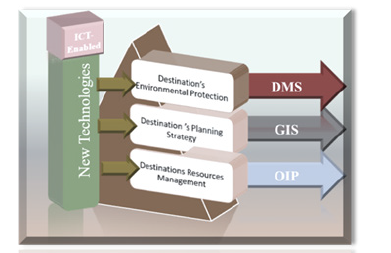
Figure 1 outlines the characteristics of SMART-Based sustainable planning for tourism recommended by Belleflamme & Neysen [4] and Van Hooft [5]. When setting objectives and using channels such as Online Information Platforms (OIP), Geographic Information Systems (GIS) and Destination Management Systems (DMS). Stakeholder involvement will support the adaptation of these systems.
Following on from this brief introduction the following review of the literature will shed light on the key factors of utilising SMART tools and systems to benefit the planning and practice of sustainable development in Ireland.
The benefits of using SMART Technologies in the sustainable planning process
The beneficial effects of SMARTs are the potential opportunities that are created for small communities and operators with respect to sustainable planning [6]. However, for this to happen, the development of e-skills must take place [7]. In this aim, local authorities and host communities need to change their characteristics to embrace the utilisation of these tools [8]. Moreover, SMART-enabled development is often categorised as the improvement of skills that will support a broader planning objective such as sustainability through the education of workers in the local community [9]. From this viewpoint, Destination Management Organisations (DMOs) become key stakeholders in the education of SMART-culture in the creation and organisational infrastructures that embed the use of these tools in the development of local tourism [10].
Traditional destination management activities like Planning, Development, Marketing, Promotion, Delivery, Management, Coordination and Monitoring have improved significantly since the emergence of SMARTs [9]. For example, DMOs are now equipped to undertake sustainable analysis using customer emails and survey questionnaires [11]. These tools can reduce costs for a destination by reducing the number of brochures produced by 90% thus reducing paper waste [10]. Furthermore, using SMART activities to reduce waste and fund DMOs benefits local communities by increasing their autonomy [6]. In sum, SMARTs can afford stakeholders the use of tools to undertake planning activities in a more effective manner [12].
The impact of SMARTs in relation to sustainability has given rise to the need for new destination management models [13]. The e-Delphi technique has been used to assess the advantages and limitations of the impact of SMARTs on the management of tourism destinations [14]. Figure 2 illustrates the e-Delphi techniques as adapted for the Irish tourism industry.
Figure 2:The e-Delphi Technique: for Irish Tourism [14].
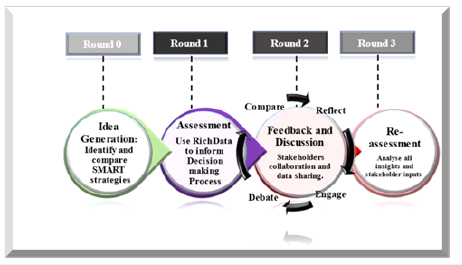
The e-Delphi technique aims to support Irish stakeholders’ engagement in the utilisation of SMART strategies. For example, the most significant contribution of this model can be observed in phase three, the interaction between stakeholders forms a network of alliances providing the opportunity to gain key insights through a process of collaboration.
The successful implementation of SMART models will depend on the governance of the destination using these technologies [15]. As the number of visitors has increased, DMOs, local authorities and host communities have had to examine SMART-enabled models that meet their plans in relation to sustainable development.
The use of SMART to monitor tourism indicators
When using SMARTs to track tourism indicators it is important to establish what these indicators will measure [16]. Thus, planning for sustainable tourism with a view to using SMARTs to refine indicators requires a thorough grasp of carrying capacity and visitor techniques [17]. In this context, the improper monitoring of indicators can have a negative impact on destination planning [18].
Throughout the literature, many authors identify the potential benefits of SMART-enabled sustainable tourism [8,9,19,20]. However, the literature does not comprehensively address the use of SMART applications to aid the monitoring of indicators, therefore this can be an innovative approach for sustainable tourism development.
There are several information systems that can be used to sort, arrange and manage the insights gained when using indicators such as ETIS [21]. According to Ali [17] Computer Simulation, Destination Management System, Economic Impact Analysis Software, Environment Management Information System, Geographical Information Systems, Global Positioning System, Tourism Information System and Weather, Climate and Ocean Change Forecasting Software are significant tools that can support the use of sustainable indicators. Each of these systems can process the insights gained from indicators such as carrying capacity.
A significant issue is the uploading of ETIS data to an SMART system in order to support the application of environmental and social policies for sustainable planning [2]. Farinha et al. [22] examine the possibility of displaying ETIS data on a free website which could be viewed by all interested parties. However, the nature of the ETIS data suggests that a continuous survey may serve as the most effective approach to uploading ETIS data online [23]. The key aim of using ETIS data on SMART systems is to support stakeholder participation and collaboration during the destination planning process [22].
According to Dupeyras & Maccallum (2013) the use of social media to monitor tourism indicators can shed light on key considerations like visitor management. For example, this type of analysis was used to monitor tourism indicators in the Minas Gerais state (Brazil) by using social media data [22]. In Brazil, three key indicators were developed and TripAdvisor was used to monitor the number of reviews of Minas Gerais tourist attractions, average satisfaction in Minas Gerais tourist destinations and percentage of evaluations at less-evaluated destinations [22]. This TripAdvisor example provides insight into the adaptability of tourism indicators, monitoring the tourist experience and engaging the tourist with a destination’s planning process.
The use of travel review websites is a resource that can be used to assess key indicators such as potential carrying capacity that will inform best practice in the decision-making process of sustainable development. There is a wide range of techniques that can shed light on key indicators such as mobilities using online resources. However, online indicators are limited when used to predSMART the overall impact of tourism in relation to a local ecosystem.
The most challenging element of using SMARTs to monitor tourism indicators is making the information accessible for all stakeholders [22]. The opportunity of making the indicator data freely available on websites may allow destination planners to gain key insights that will lead to assessment of issues in a timely manner [24]. Most indicator systems can be uploaded to free websites and are accessible as a primary source of information [22].
Automatic Programs (API) can be used to upload insights obtained through the use of tourism indicators such as ETIS [24]. Tourism indicators should evolve over time. The addition of new indicators to an automatic system will support the planning and development of a destination [22]. This objective is achieved by using online surveys to gain key insights from all relevant stakeholders [23]. Farinha et al. [22] conclude that using online surveys to gain insights into the attitudes of stakeholders is the future of data collection for destination planning.
SMART Governance and Funding
SMART governance is defined as the process that enables the achievement of organisational strategies and objectives (ISSA 2021). This approach to destination management affords an organisation the opportunity of measuring results against broader business strategies and goals. SMARTs have a significant role in the developing, extending, managing and distributing tourism products all over the world [25]. Figure 2 outlines the effective implementation of SMART frameworks with respect to the governance of Destination Management.
This approach to destination planning has enabled the effective use of clear and transparent strategies driven by sustainability [26]. For example, the utilisation of SMARTs in Zimbabwe supported the implementation of sustainable strategies using evidence-based planning that enhanced the tourism sector [26]. In fact, a strategic framework helps local authorities in creating sustainable growth and increases market positioning within the tourism sector at an international level.
Within an Irish context, the tourism marketing fund allocates funding for SMARTs in order to attract a higher number of overseas visits to locations such as the Wild Atlantic Way [27]. Fáilte Ireland [28] identify this as a key strategy in generating income that will fund a more sustainable approach to Irish destination planning and improve the tourist experience. The funding of SMART development has become a part of the majority of local authority planning strategies [29]. This strategy will afford local communities the opportunity to engage with visitors in the Pre-trip phase [27]. This is a key factor in the approach to destination planning and development for local communities involved in Irish tourism [30].
The most significant sign of investment in SMARTs has been the broadband rollout in rural Ireland nevertheless, this has yet to be completed Thus, destination planning is difficult in these areas [30]. In order for the Irish tourism industry to expand and grow further, a higher level of SMART investment is need to support sustainable strategies for destination planning [31]. In the literature, the capital invested into SMARTs is identified as a key factor when planning future tourism infrastructure [28-31].
As an Island, Ireland offers specific visitor attractions such as cultural heritage and beautiful landscapes, these unique assets are supported by the hospitality of local communities that require SMARTs to attract visitors to their destination [28]. Currently, these communities have had to assess the impact that this tourist activity has had on their destination [31]. This is the reason that SMARTs are becoming more important as monitoring tools that provide key insights into aspects of tourist mobilities that have an environmental impact on Irish destinations [29].
Capital investment in SMARTs would provide significant improvement in the planning of infrastructure in the smaller rural destinations in Ireland [30]. These technologies will increase the participation and collaboration between local authorities and host communities of rural areas such as the Aran islands [31]. The investment in SMART tools such as GIS would support the use of sustainable indicator systems such as the ETIS in the planning and development of these destinations [31].
The literature does not fully explore the number of Irish destinations that seek funding to improve their SMART infrastructure. ITIC [31] identifies a lack of investment in these technologies across the Irish tourism sector. The grants scheme is aimed toward brand identity through the use of marketing communications rather than the use of SMARTs for environmental planning [30]. In an Irish context there is very little evidence of government investment in SMART with the exception of a broadband strategy for communications but this has become stagnant [30].
According to Ali [17] SMART investment would make a significant step forward in the development and planning of a destination. The core concept of tourism is to benefit local employment and support economic growth however, there is little evidence that rural Ireland receive a huge amount of funding from either national or local government [30]. Figure 3 reveals the grant structure for rural tourism projects in Ireland Figure 4.
Figure 3:SMART Framework for the Governance of Destination Management (Quora 2021).
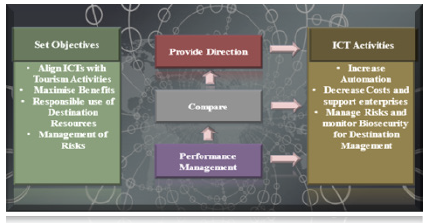
Figure 4:Grant Categories and Structure for Rural Tourism in Ireland [30].
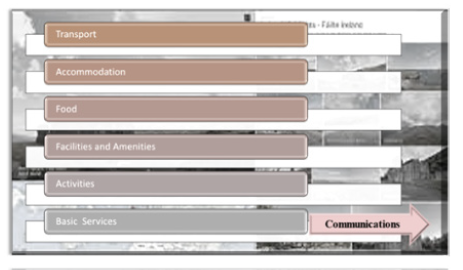
In May 2020, the tourism recovery task force (TRT) consulted with Irish businesses and organisations using SMART platforms [32]. Based on the workable insights gained from the consultation process a number of key findings were established. One common element was the recommendation utilisation of SMART systems to support local communities in destination management [30]. This sustainable strategy will be used to underpin the future use of SMARTs with respect to Irish tourism [32]. The key elements of this strategy are the provision of a digitalisation plan to increase visibility of small island destinations such as the Aran islands [27].
Digitalisation will be a key consideration of sustainable planning for Ireland moving forward and this will be achieved through consultation and governance [28]. The TRT [32] identify SMARTs as a significant part of increasing business growth and market share. The key opportunities of digitalisation include: Market reach, increase growth and improved operational efficiencies as well as enhancing the visitor experience and improving destination management. The following section will analyse environment management information systems that may be of benefit to Irish stakeholders.
An Overview of environment management information systems
An Environment Management Information System (EMIS) is a significant tool for sustainable development, by which destination managers can consider the environmental issues of their destinations [33,34]. This computer-based technology is a significant factor in the monitoring of eco-systems when adapting SMARTs for sustainable tourism [19]. In the literature, EMIS are defined as a combination of computer hardware, software, and professional services to manage the environmental function within an organisation [34]. EMIS benefits the monitoring of sustainable planning through the coordination of activities such as tracking waste, monitoring emissions, scheduling tasks, organising permit documentation, conducting a cost benefit analysis, and choosing alternative materials that are kinder on the local ecosystem [19].
The EMIS identifies aspects of scattered information that allows the end user to analyse significant insights that will inform databases and maps [33]. Thus, DMOs can use these workable insights to analyse environmental factors such as environmental quality of the destinations, visitor impacts, visitor statistics and host population attitude [17,35].
Another key benefit of EMIS is the ability of the software to provide insights into a cross-organisational integration of environmental data [33]. EMISs play a significant role in the development of a destination’s environmental management system, where the objective of the system is to automate the management tasks while meeting the reporting needs of the stakeholders [34]. DMOs can also utilise EMISs to monitor hazardous situations and prevent potential disasters [33]. EMIS can be utilised in sustainable planning due to the significant impact that tourism activities have on the local ecosystem [34]. The most notable use of EMIS is in Xanterra Parks and Resorts Ecologix System [32]. Figure 3 9 demonstrates this EMIS process.
The computerised Ecologix system illustrated (above) monitors an organisation’s consumption of electricity, fuels and water (Figure 5), its generation of solid waste, its recycled materials, its hazardous materials, its recycled hazardous materials, its sustainable cuisine and greenhouse gas emissions. This is the most common EMIS used in national parks in the US [32].
Toward A Theoretical Framework for SMARTEnabled Destination Planning in Ireland
To devise a framework of best practice for this study, based on previous research in the area, it was decided to assess the already evident benefits of SMART-enabled planning for sustainable development. In analysing the literature, it was found that this area is still under-researched. There are key aspects, such as SMART funding for Irish business and the use of these tools and technologies for sustainable planning, that have yet to be fully explored.
In order to achieve the study’s main objective, the researchers developed a research framework to assist in identifying significant aspects of SMART utilisation that would benefit stakeholders involved in destination planning. Figure 5 outlines the framework used by the researchers with a view to sorting, arranging and categorising the information obtained through content analysis.
Figure 5:Xanterra Parks and Resorts Ecologix (EMIS) System [32].
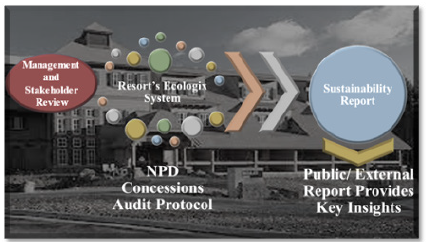
Figure 5 is a theoretical framework that will assess the benefits of SMART-enabled destination planning. The framework is divided into four sections based on the relevant areas of exploration that will aid the research of this study. The first section analyses the application of traditional business models as best practices for the implementation of SMART Strategies. Secondly, the framework will allow the researcher to analyse the potential benefits of using SMART systems to sort, arrange and categorise the data obtained from the ETIS. Thirdly, Google Analytics will be used as an additional research instrument with the intention of obtaining workable insights that will inform best practice with respect to visitor behaviours. Finally, the key aim of the proposed framework is the storage of data, its ease of use and its accessibility to all relevant stakeholders involved in the destination planning process. The overall objective of this framework is the use of SMART platforms to share information and improve interactions amongst all relevant stakeholders involved in the sustainable planning process for island destinations.
The insights gained from the literature review highlighted the need to evaluate the enormous potential of utilising SMARTs in the planning and sustainable development of Irish tourism destinations. A number of key authors have formed the opinion that SMARTs create a value proposition in relation to the achieving sustainability in the future. However, there is a gap in the literature as it relates to the use of SMARTs for destination planning in an Irish context. The literature sheds light on the key advantages of utilising SMART systems to aid in the implementation of an ETIS strategy. Previous research reveals the adaptation of traditional models in order to aid evidence-based exploration in respect of sustainable indicators. Based on these workable insights a proposed framework for sustainable island tourism was devised.
A Proposed Framework for Sustainable Island Tourism Using SMART Platforms
This section of the study presents a proposed framework based on the findings of the content analysis. This model has managerial implications for governmental policies, local authorities and those responsible for destination planning at a community level. This model is presented as a suggestion it is not a final solution as it is based on content analysis and not primary research. In an effort to address the challenges and opportunities for destination planning posed by SMART adaptation, this study proposes an augmentation of the EMIS model that focuses on sustainable island tourism in an Irish context. Figure 6 illustrates the adaptation of this modified Environmental Management Information System (EMIS).
Figure 6:A Theoretical Framework for Content Analysis of Literature Review.
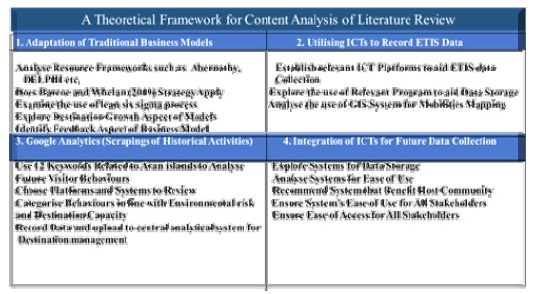
This model presents a more robust framework that combines the use of ETIS and SMART platforms to provide governments, local authorities and local communities with a strategic diagnosis of the environmental impact of tourism on island destinations. The use of SMART modifications allows all interested parties to evaluate the key requirements in relation to destination planning and development. Nevertheless, the presence of SMART platforms promises up-to-date insights using internal and external reporting across an automated DMS. This framework outlines the future role that SMARTs could play in the development of a sustainable strategy for tourism in Ireland.
Another key consideration of this strategy is the use of SMART platforms as communication channels amongst all stakeholders. In this instance the OIP used to record and share the ETIS data acts as a moderator in relation to stakeholder interaction that supports the destination planning process. The evidence of this study highlights the need of each stakeholder to use SMARTs in the monitoring of ETIS. While each stakeholder has an individual role to play in destination planning, there are still practices that are necessary in relation to managing the destination such as the assessment of mobilities, the collection of environmental data and contributing to a broader stakeholder evaluation.
Figure 7 illustrates the role of SMARTs as a moderator in relation to the effect of the proposed framework from a stakeholder viewpoint.
Figure 7:A Proposed Framework for Sustainable Island Tourism using SMART-enabled Destination Planning.

Figure 7 explains the change that occurs when SMART platforms are used to augment the planning process, supplementing (feeding) the destination development with data obtained from sustainable indicators and stakeholder inputs. The workable insights provided by the SMART platforms increase the value proposition for all interested parties. Data gleaned and recorded from platforms such as OIP, GIS and EMIS contribute to a wider interaction amongst stakeholders. This stakeholder interactivity that occurs through the utilisation of SMARTs can lead to the creation of an automated database that informs best practice for destination management. This makes destination planning and development far more accessible and cost effective for the Irish stakeholder
These models integrate SMART platforms that provide opportunities for evidence-based destination planning, maximising both external and internal resources such as government funding, local authority planning and the management of the impact of tourism on ecosystems by local communities. To take advantage of this potential, stakeholders need to transition from a traditional view of using ETIS to a stakeholder perspective of using SMART platforms, systems and tools with a view to achieving an automated monitoring DMS. In the presence of SMARTs, ETIS data can contribute to sustainable planning strategies in multiple ways.
Limitations of the Study
As with any research study, several limitations must be acknowledged. The study’s scope to generate workable insights was obtained through analysing content from the existing literature regarding Sustainable tourism, ETIS and the use of SMART platforms to record and manage data. In turn, the findings and transferability of the proposed models and strategy are tied to the specific context of sustainable island tourism. Lastly, the content analysis includes SMART strategies that were proposed but not implemented in small island regions by the time of writing.
Conclusion
The main objective of this study has been to examine the role of SMARTs in sustainable island tourism. Content analysis of the existing literature shed light on the importance of using a broad range of platforms as part of a destination planning strategy. Furthermore, the analysis also provides insights into the knowledge and resource requirements of Irish stakeholders with regards to sustainable island tourism and destination management. A key finding is that there is enormous potential for SMART platforms to provide a cost-effective approach to the planning of tourism in Ireland.
Any such strategy should consider the advantages of using SMARTs to supplement the implementation of sustainable indicator systems such as the ETIS. As a result of such an understanding, stakeholders will be able to obtain workable insights from an automated database that will inform best practice. This research contributes to a refined understanding of the complexities of utilising SMARTs vis-à-vis the sorting and management of data gleaned from the ETIS. As such, the findings not only help stakeholders understand better the relevant value of SMART platforms, systems and databases but furthermore the theoretical models and proposed strategy may inform Irish stakeholders of the advantages of using SMARTs when planning tourism for small islands.
This study makes a theoretical contribution to the field of sustainable tourism research as it extends the contribution of Ali [17], Janowski [3] and Farinha et al. [22] on the use of an SMARTenabled strategy for destination planning. The findings also shed light on the effectiveness of SMARTs in relation to stakeholder interactivity when monitoring sustainable indicators.
The theoretical models and strategy proposed will not only help Irish stakeholders understand the potential of utilising SMARTs to monitor ETIS leading to, an automated database, but these suggestions will also amount to a cost-effective method of maximising resources when monitoring the impact of tourism on small island ecosystems.
Recommendation
With regard to future research, there are many possibilities. This kind of research could involve working with stakeholders on small islands, which would allow researchers obtain rich data and develop theoretical implications. In considering utilising SMART platforms to supplement ETIS, research could also focus on the use of video and live streaming to support stakeholder interactivity (Figure 8).
Figure 8:The Effect of Proposed SMART Framework from a Stakeholder Viewpoint.
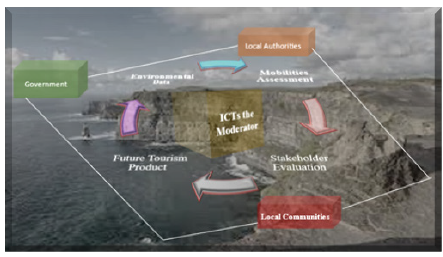
An investigation into the use of Google scrapings from tourism websites such as TripAdvisor to provide further insights as part of an automated database might also shed light on further opportunities to communicate destination values when planning tourism in an Irish context [35-41].
To conclude, SMART platforms have a pivotal role to play in the monitoring of sustainable indicators. These platforms allow DMOs to become very specific when planning sustainable tourism in an Irish context. This study sheds light on the complex nature of destination planning and development while employing SMARTs to monitor ETIS. In practice, this is too difficult to manage or execute by a single stakeholder. Thus, the use of database automation identified in this study is necessary when implementing destination management strategies.
References
- Conaghan A, McLoughlin E, Hanrahan J (2015) A model for the transition towards the sustainable management of tourism destinations in Ireland. International Journal for Responsible Tourism, Fundatia Amfiteatru 4(2): 103-122.
- Ali A, Frew A (2010) SMART and its Role in Sustainable Tourism Development. In: Gretzel U, Law R, Fuchs M (Eds.), Information and Communication Technologies in Tourism, Springer-Verlag, Vienna, Austria, pp. 479-491.
- Janowski T (2015) From electronic governance to policy-driven electronic governance of technology use in government. In: Cantoni L, Danowski J (Eds.), Communication and Technology, De Gruyter Mouton, pp. 425-439.
- Belleflamme P, Neysen N (2009) Coopetition in infomediation: General analysis and application to e-Tourism. Advances in Tourism Economics, Springer Books, pp. 217-234.
- Van Hooft SJ (2010) Towards an SMART framework for sustainable tourism. Radbound University Publications, Netherlands.
- Ndou V, Petti C (2006) DMS business models design and destination configurations: Choice and Implementation Issues. Journal of Information Technology and Tourism 9(1): 3-14.
- Ndou V, Elia G, Petti C (2006) Barriers to the implementation of virtual networks in SMEs: The Case of Tourism Networks. Proceedings of the IADIS International Conference on 2006, Murcia, Spain, pp. 409-416.
- Buhalis D, Deimezi O (2004) E-tourism developments in Greece: Information communication technologies adoption for the strategic management of the Greek tourism industry. Tourism and Hospitality Research 5(2): 103-130.
- Buhalis D (2003) Information technologies as a strategic tool for economic, cultural and environmental benefits enhancement of tourism at destination regions. Progress in Tourism and Hospitality Research 3(1): 1997.
- (2006) European Commission, SMART and Electronic Business in the Tourism Industry. SMART Adoption and e-Business Activity, Brussels, Belgium.
- Sigala M, Marinidis D (2010) DMOs, e-democracy and collaborative destination management: An implementation framework. In: Gretzel U, Law R, Fuchs M (Eds), Information and communication technologies in tourism. Springer, Vienna, Austria, pp. 235-246.
- Lipsey R G (1999) Source of Continued Long-run Economic Dynamism in the 21st Century, in OECD, The future of the global economy: Towards a long boom? OECD Press, Paris, France.
- Ivars BJ, Celdrán B, Norberto MA, Perles Ivars AF (2017) Smart destinations and the evolution of SMARTs: A new scenario for destination management? Taylor and Francis 22(13): 1581-1600.
- Smith G, Barcoe C (2019) Investigating the future role of the irish culinary competition in relation to creating opportunities for the Irish Food Production Industry WIT Press.
- Gretzel U, Fesenmaier D, Formica S, O’Leary J (2006) Searching for the future: Challenges faced by destination marketing organizations. Journal of Travel Research 45(2): 116-126.
- Miller G, Twining Ward L (2006) Monitoring as an approach to sustainable tourism. In: Buhalis D, Costa C (Eds.), Tourism management dynamics: Trends, management and tools. Oxford: Elsevier Ltd, pp. 51-57.
- Ali A (2009) An investigation into information and communication technologies-based applications for sustainable tourism development of destinations: PhD Thesis: Queen Margaret University, UK.
- Choi HC, Sirakaya E (2006) Sustainability indicators for managing community tourism. Tourism Management 27(6): 1274-1289.
- Moore M, Bordeleau D (2001) The environmental management information system (EMIS) of the intelligent environmental management system.
- Liburd L J (2005) Sustainable tourism and innovation on mobile tourism services. Tourism Review International 9(1): 107-118.
- Lew A, McKercher B (2005) Modeling tourist movements: A local destination analysis. Annals of Tourism Research 33(2): 403-423.
- Farinha F, Oliveira M, Silva E, Lança R, Pinheiro MD, et al. (2019) Selection process of sustainable indicators for the Algarve Region-OBSERVE Project. Journal of Sustainable Tourism 11(2): 444.
- Palos Sanchez PR, Saura JR, Reyes Menendez AR, Vasquez I (2018) Users acceptance of location-based marketing apps in tourism sector: An Exploratory Analysis. Journal of Spatial and Organisational Dynamics 6(3): 258-270.
- Tudorache DM, Simon T, Frent C, Mustea¸tă-Pavel M (2017) Difficulties and challenges in applying the European Tourism Indicators System (ETIS) for Sustainable Tourist Destinations: The Case of Braşov County in the Romanian Carpathians. Sustainability 9(10): 1879.
- Tsokota T, von Solms R, van Greunen (2017) An SMART Strategy for the Sustainable Development of the Tourism Sector in a Developing Country: A Case Study of Zimbabwe. EJISDC 78(5): 1-20.
- de Ruijter P (2016) Scenario Based Strategy: Navigate the Future. Taylor & Francis.
- ie Reports (2021) Improving SMART Infrastructure.
- Fáilte Ireland (2020) Research Insights
- Fingal County Council (2017) Fingal Tourism Statement 2017-2022, pp. 1-26.
- Moisuc M (2018) Exploring the role of Irish local authorities in Tourism Development: A Senior Management Perspective on Tourism Development in Cork County Council.
- ITIC Industry Report (2017)
- (2021) Xanterra Parks and Resorts Case Study.
- UNWTO (2002) Conceptual framework of tourism destinations.
- El-Gayar O, Fritz BD (2006) Environmental Management Information Systems (EMIS) for Sustainable Development: A Conceptual Overview. Journal of Communications of the Association for Information Systems 17: 34.
- Mihalic T (2000) Environmental management of a tourist destination: a factor of tourism competitiveness. Tourism Management 21(1): 65-78.
- Barcoe C, Whelan Dr G (2019) Investigating how social-media can augment existing marketing strategies for all stakeholders in the us consumer visitor-irish tourism market. International Journal of Tourism and Hospitality, THRIC.
- Barcoe C, Whelan Dr G (2018) A proposed framework for measuring the effectiveness of social-media: A Study of Irish Tourism. WIT Press, Sustainable Tourism 7:
- McLoughlin E, Hanrahan J (2019) Local authority sustainable planning for tourism: Lessons from Ireland. Tourism Review 74(3): 327-348.
- Petti C, Ndou V (2006) Tailoring DMS business models to destinations configurations. In: Hitz M, Murphy J, Sigala M (Eds.), Information and Communication Technologies in Tourism 2006, Springer-Verlag, Wien-New York, USA.
- Tourism Recovery Taskforce: Tourism Recovery Plan 2020-2023.
- World Tourism Organisation (2019) Sustainable Development.
© 2024 Colm Barcoe. This is an open access article distributed under the terms of the Creative Commons Attribution License , which permits unrestricted use, distribution, and build upon your work non-commercially.
 a Creative Commons Attribution 4.0 International License. Based on a work at www.crimsonpublishers.com.
Best viewed in
a Creative Commons Attribution 4.0 International License. Based on a work at www.crimsonpublishers.com.
Best viewed in 







.jpg)






























 Editorial Board Registrations
Editorial Board Registrations Submit your Article
Submit your Article Refer a Friend
Refer a Friend Advertise With Us
Advertise With Us
.jpg)






.jpg)













.bmp)
.jpg)
.png)
.jpg)














.png)

.png)



.png)






